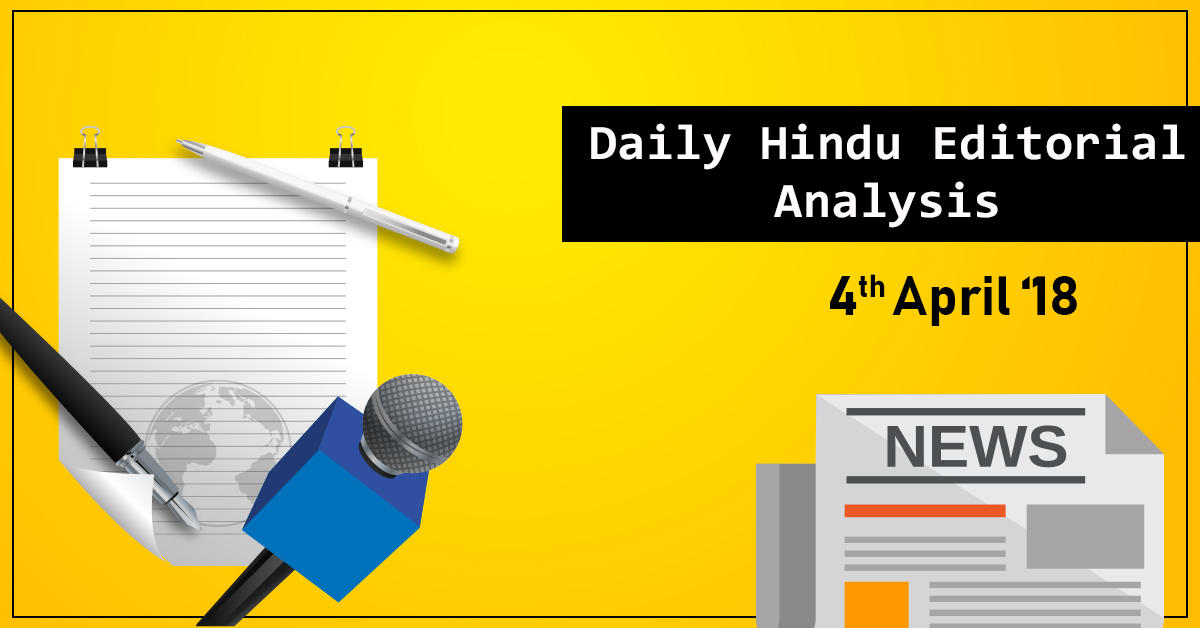Table of Contents
Back on track
Aborted attempt in February
Tax net from April 1. No major execution challenges
IT backbone that generates the e-way bills
1 st two days of the e-way system, which included a Sunday, 5.5 lakh e-way bills
were generated, and the GST Network has said that the system is now geared to
cope with a much higher capacity
Finance Secretary Hasmukh Adhia expects collections to pick up further as the a
uthorities get a better sense of who is regularly filing returns and paying taxes.
Schedule for rolling out e-way bills for intra-State trade in a few States at a
time is expected soon
 Launch lessons
Launch lessons
There is no such thing as total failure; ISRO should learn from its satellite launch problem
 GSAT-6A was first raised to elliptical orbit marked by the following parameters
GSAT-6A was first raised to elliptical orbit marked by the following parameters
: its perigee, or point of closest approach to Earth, was 5,054 km; and its apogee,
or point of farthest approach, was 36,412 km
How the data sets stack up
Why measuring inequality is not the same as measuring changes in the level of poverty in India
Recent years, there has been a lot of discussion on
increasing inequality within several countries of the world, including India, particularly after the publication of Thomas Piketty’s book on inequality-French
It is true that rising inequality has adverse economic and social consequences.
Gini coefficient or other measures of inequality are being used to examine trends in inequality Gini coefficient, which lies between 0 and 1

Consumption inequality
Study shows that inequality in rural declined while it increased in urban areas in the post – reform period, particularly in the high growth period
Gini coefficient of consumption expenditure for rural areas declined marginally between 1983-84 to 1993-94 (from 0.304 to 0.286) while it recorded a marginal rise during the high growth period of 2004-05 and 2011-12 (from 0.304 to 0.311).
In urban areas, it stayed the same from 1983-84 to 1993-94 (0.344) while it increased modestly from 2004-05 to 2011-12 (0.376 to 0.390).
Income inequality
Income and wealth inequalities are higher than consumption inequality.
Some estimates, consumption Gini coefficient was 0.36 in 2011-12 in India.
On the other hand, inequality in income was high with a Gini coefficient
of 0.55 while wealth Gini coefficient was 0.74 in 2011-12.
NSSO surveys have been studied for long & have gone through critical analysis
Trends in poverty ratio
Any household failing to meet level of consumption expenditure can be treated as a poor household
Rate of decline in poverty was 0.8 percentage points per annum- 1993-2005
Poverty declined faster in the post – reform period, particularly in the 2004-2012 period as compared to 1993-2005
Post-reform period, overall poverty as defined by the Tendulkar Committee
Declined faster from 45.3% in 1993-94 to 21.9% in 2011-12 – an annual decline of 1.3 percentage points.
Growth and distribution
The impact of higher growth on poverty reduction can also be seen from the
decile-wise growth in per capita consumption expenditure
The decline in poverty is much higher particularly in the period 2004-05
to 2011-12 in spite of rise in inequality
Prelims Focus Facts-News Analysis
Page-1- No affront to Dalit rights, says SC
Defends its ruling on SC/ST Act as it only protects an innocent person from arbitrary arrest

 Page-1- Class 10 maths re-exam plan dropped
Page-1- Class 10 maths re-exam plan dropped
Ministry of Human Resource Development and the CBSE have decided not
to re-conduct the Class 10 mathematics examination anywhere in India.
A few days ago, School Education Secretary Anil Swarup said government
Would take a call within 15 days on whether the exam should be held in
Delhi/NCR and Haryana
Prelims Focus Facts-News Analysis
Page-1- National institutional ranking identifies top universities
National Institutional Ranking Framework (NIRF) India Rankings 2018
The third edition of the NIRF Rankings, released by the Ministry of Human
Resource Development on Tuesday, included overall rankings across disciplines
and category-wise ranking for
engineering, pharmacy, medical, management, architecture, law, university
and colleges.
IISc, Bengaluru, retained its position as India’s topranked university for the
third year in a row.
JNU was ranked second, followed by BHU in the third place.
Prelims Focus Facts-News Analysis
Bridge gap between rural, urban education: Anil Kakodkar
Anil Kakodkar Committee-?
SC to hear Cauvery case on April 9- Centre’s application along with Tamil Nadu
French workers begin strike
Agitation to go on for three months, testing Macron’s resolve to bring in reforms
‘China appreciates N. Korea’s peace efforts’
Mukesh Ambani-led Jio Payments Bank Limited has commenced operations
as a payments bank with effect from April 3, 2018, the Reserve Bank of
India (RBI) said in a statement.























 WhatsApp
WhatsApp